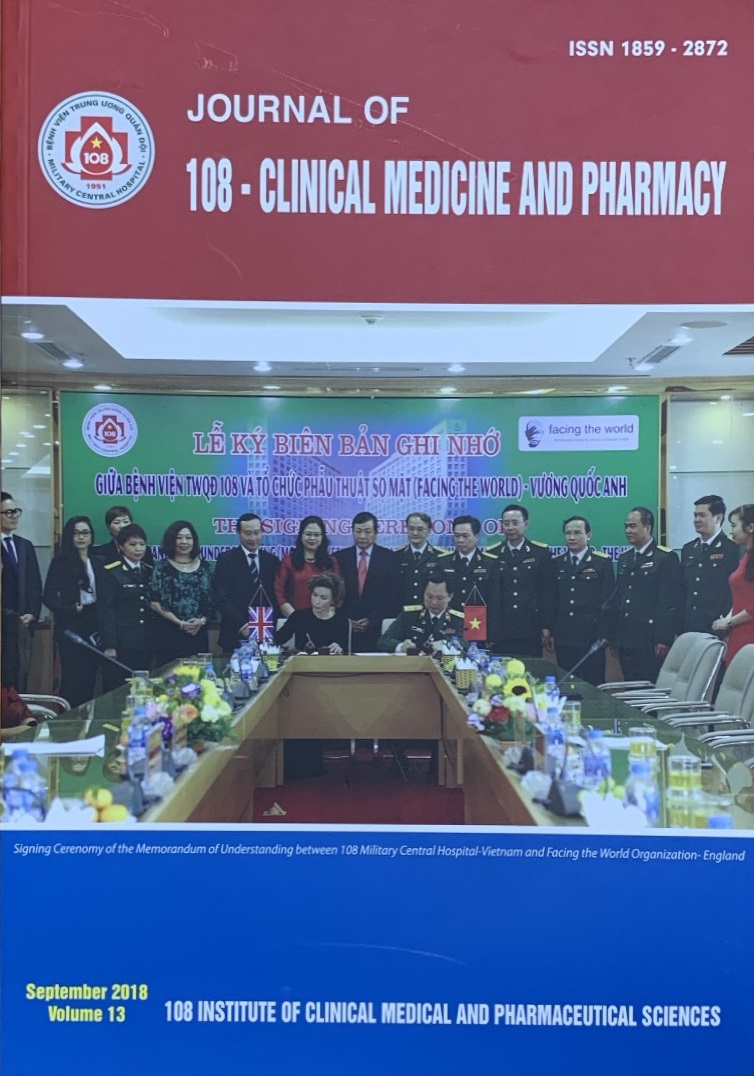Effect of botulinum toxin type A (Dysport®) injection combined with rehabilitation on improving the dynamic spastic equinus foot in children with spastic cerebral palsy
Main Article Content
Keywords
Tóm tắt
Objective: To evaluate the efficacy of botulinum toxin type A (BTA) injection in combination with rehabilitation on improving the dynamic spastic equinus foot in children with spastic cerebral palsy. Subject and method: Longitudinal interventional study with a control group. 140 eligible children with spastic cerebral palsy from 2 to 12 years old who were recruited from the Rehabilitation Department of National Children’s Hospital from December 2015 to December 2017. Result: After 12 months of the treatment, the mean MAS scores of the gastrocnemius-soleus of the intervention group decreased by 1.39 ± 0.63 (p<0.01), and the passive ankle range of motion (ankle-PROM) was increased by 16.66 ± 11.99° (p<0.01), while the mean MAS scores of the control group decreased by 0.15 ± 0.34° (p<0.01), and ankle-PROM was increased by 3.10 ± 7.38° (p<0.01). The mean difference of mean MAS scores at 12 months after treating between both groups was -1.07 (p<0.01), and the mean difference of mean ankle-PROM was 11.69° (p<0.01). Conclusion: Botulinum toxin type A (Dysport®) - injection combined with rehabilitation improved muscles tone, increasing passive ankle range of motion, and improving on lower limb motor function in children with spastic cerebral palsy.
Keywords: Spastic cerebral palsy, botulinum toxin type A, spastic equinus foot.
Article Details
Các tài liệu tham khảo
2. Koman LA et al (1993) Management of cere-bral palsy with botulinum-A toxin: Preliminary investigation. J Pediatr Orthop 13(4): 489-495.
3. Bohannon RW and MB Smith (1987) Interrater reliability of a modified Ashworth scale of mus-cle spasticity. Phys Ther 67(2): 206-207.
4. Camargo CHF et al (2009) Botulinum toxin type A in the treatment of lower-limb spasticity in children with cerebral palsy. Arquivos de Neuro-Psiquiatria 67: 62-68.
5. Joung Lee S et al (2011) The effect and com-plication of botulinum toxin type A injection with serial casting for the treatment of spastic equinus foot. Ann Rehabil Med. 35(3): 344-353.
6. Ackman JD et al (2005) Comparing botulinum toxin A with casting for treatment of dynamic equinus in children with cerebral palsy. Dev Med Child Neurol 47(9): 620-627.
7. Tedroff K et al (2009) Long-term effects of botulinum toxin A in children with cerebral pal-sy. Dev Med Child Neurol. 51(2): 120-127.
8. Samizadeh S and K De Boulle (2018) Botuli-num neurotoxin formulations: Overcoming the confusion. Clin Cosmet Investig Dermatol 11: 273-287.
9. Koog YH and BI Min (2010) Effects of botuli-num toxin A on calf muscles in children with cerebral palsy: A systematic review. Clin Re-habil 24(8): 685-700.
10. Bottos M et al (2003) Botulinum toxin with and without casting in ambulant children with spas-tic diplegia: A clinical and functional assess-ment. Dev Med Child Neurol 45(11): 758-762.
 ISSN: 1859 - 2872
ISSN: 1859 - 2872
